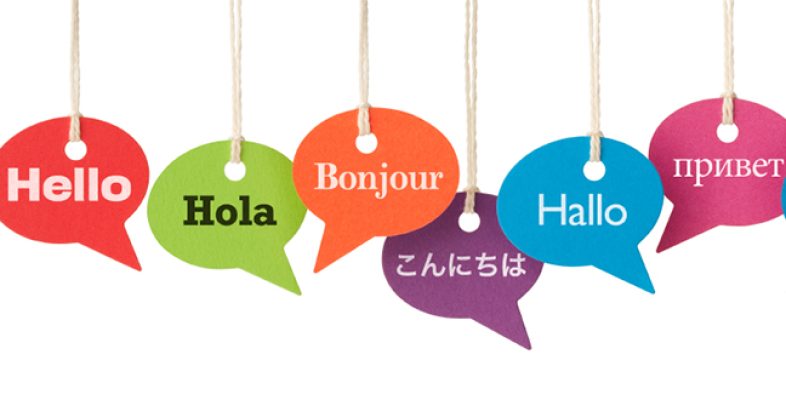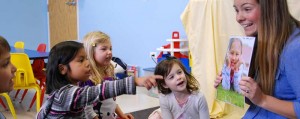The benefits of knowing a second language are multi-fold. It can increase your children’s future job opportunities, enrich travel experiences and stimulate their minds in new and exciting ways. If you’re not bilingual yourself (or all you have is a couple of years of high school Spanish), you may think you’re not equipped to help kids learn a foreign language. In fact, exposing your child (and you) to a new language need not be complex or costly.
Here are five ways to help your child develop bilingual skills that fit any budget or learning style:
Language Apps For Kids
Apps are the best thing ever. These days, there seems to be a low-cost app that can teach you anything. You can buy Rosetta Stone software for $100-$250, but why not try a free (or nearly free) app for your kids’ iPhone, iPad or tablet instead? Since kids love their devices, this seems like the natural conduit to drop some language skills on them lennossa. Here are a few apps to consider:
- Gus on the Go – Better for younger kids, an animated traveling owl teaches fun and easy foreign language vocabulary lessons. With more than 25 languages to choose from at a price tag of less than $4, this one is muy bueno.
- Little Pim – For elementary school kids, the Panda hero of this series of iTunes videos and apps teaches kids language in a fun way. Videos run $20 and are themed (like food, home, numbers, feelings, etc.). This series is sehr gut.
- Mindsnacks – This totally free app was rated “one of the best educational apps of the year” and is recommended for grade five through adult. It’s game based, so you play along to level up while you learn. The low cost and high ratings make this one perfetto.
Language programs
As mentioned above, Rosetta Stone can cost a fortune, but you can get costly audio, video, software and book language programs for zero cost from your local library. Browse the non-fiction stacks of your local library (or your child’s school library) in the 430 through 490 sections for shelves of free resources. Your library may also offer e-resources you can access through your digital device. Check OverDrive.com, 3M Cloud Library or ask at the checkout desk to see if your library participates in an online resource program so you can download language books for your kids free and instantly. That’s a magkaunawaan.
Total immersion
It’s accepted wisdom that immersion is the preferable way to fast track lifelong foreign language skills, but if you don’t speak a foreign language yourself, what can you do? Here are some tips to try to help your child jump into the djúpt enda.
- Look for a family friend or relative with second language skills and arrange for your child to spend time with them but ask them to only speak their native (or learned) language when they interact with your child.
- Consider an online French class to practice 1-3 times a week.
- Check local colleges for foreign students that may be willing to come to your house and hang out and share their native language skills in exchange for a bit of cash, a home cooked meal, and some family time if they’re lonely.
- Contact your local senior center to find out if they have any retirees with multi-lingual skills who might enjoy a visit from your student. This is a win-win. The senior gets face time with a visitor, and your kid gets language help.
Community programs
Parks and recreation based programs are cheaper than language schools or day camps. You can score a language program for as little as $5 a class through your rec department. The downside to a community program is that it’s a group setting and will move only as fast as the slowest participant. The upsides are that it’s local to you, very affordable and can allow your child to sample different language programs on the cheap to see which one they prefer. From there, you can invest in language learning for the tongue that most appeals to them. That’s koopje!
Netflix, Amazon Prime and YouTube
Take advantage of free and subscription video accounts to find language lessons. Today’s children are very comfortable with video lessons – many use YouTube to learn the tricks of all their favorite video games or to master their latest math lesson. Why not put their love of video to practical language use? It can be synarpastikós for you and your kids.
- YouTube.com offers a wide array of free language lessons. Some offer a short session then send you to a website for priced versions while some channels are dedicated to a specific language and offer a free YouTube-based program to teach your young one language skills.
- There are two ways to use Netflix.com for bilingual instruction. First, Have your kids watch their fave films dubbed into another language. Click here to see how to utilize alternate audio settings. Second, use Netflix DVD mailer options to rent instructional language DVDs. Log into your account and browse the Special Interest category to find foreign language lesson DVDs.
- With Amazon.com, an annual Prime account gets you access to a load of free materials including gratis Kindle language books. If you don’t have a Kindle, you can download the Kindle app for your iPhone or another device. Prime Music offers subliminal language lessons, and the Kindle Owners Lending Library has a number of foreign language books you can check out for free. As with Netflix, you can set streaming videos to alternate dubbed languages or foreign subtitles. And if you have a $9.99 monthly Kindle Unlimited subscription, there are more than 7,300 titles in this category to help your child learn a foreign language. And if your child doesn’t have a Kindle, you can get an HD Fire Kindle for as low as $99 so they can access these lessons without the cost of an iPad.
Learning a second (or third or fourth) language can broaden your child’s horizons for the rest of his/her lives. If they want to try a foreign exchange program as a teen, they’ll be well equipped. It can make them feel more at ease when you travel internationally and, studies show, taking on a second language enhances your child’s cognitive development. Plus, once they’re grown, having another language in their skill set can enhance your kid’s job opportunities and earnings potential which is fantastisk.
Article phrase guide:
- lennossa – Finnish for “on the fly”
- muy bueno – Spanish for “very good”
- sehr gut – German for “very good”
- perfetto – Italian for “perfect”
- magkaunawaan – Filipino for “bargain”
- djúpt enda – Icelandic for “deep end”
- koopje – Dutch for “bargain”
- synarpastikós – Greek for “exciting”
If you want to help your child learn a foreign language this summer, check out EFBA French Immersion Summer Camps which has several locations in the SF Bay Area. Or you can find online French classes to experience language learning classes from anywhere!



















